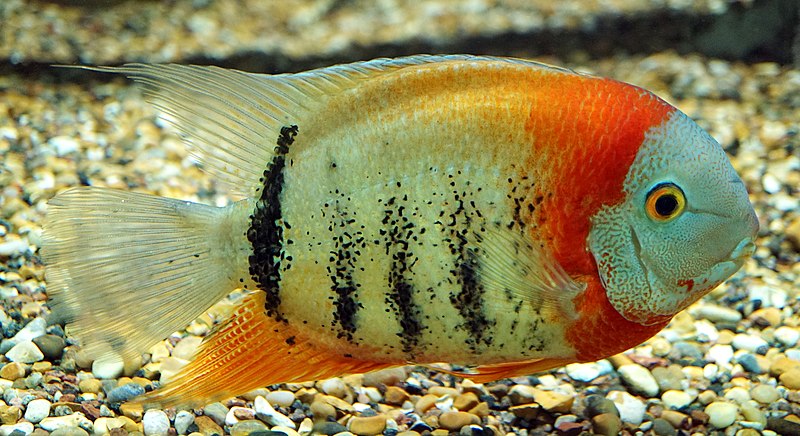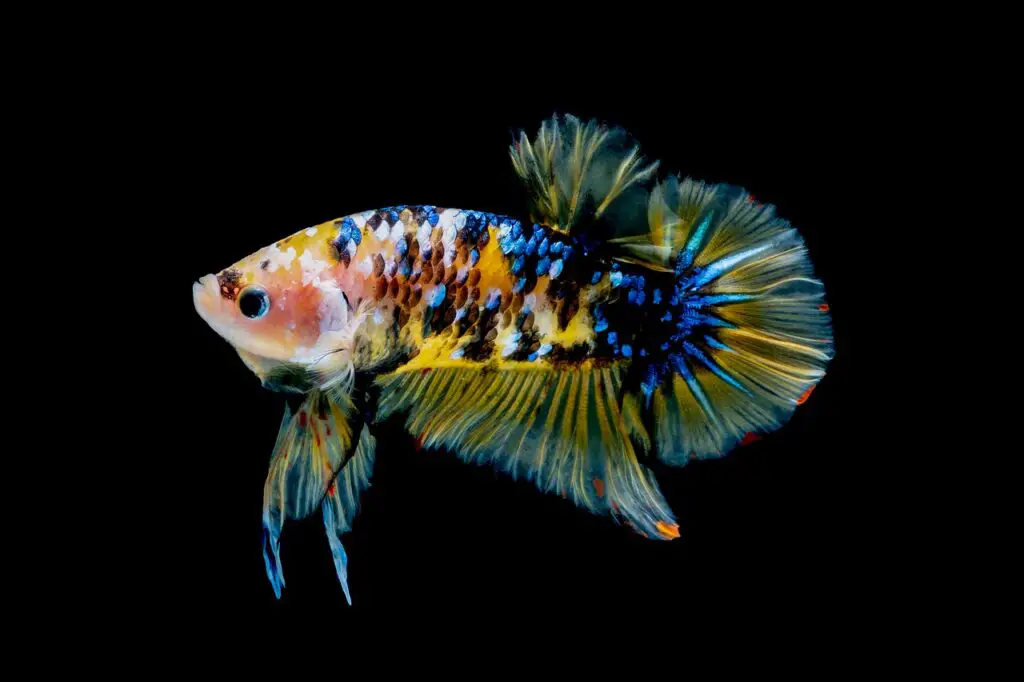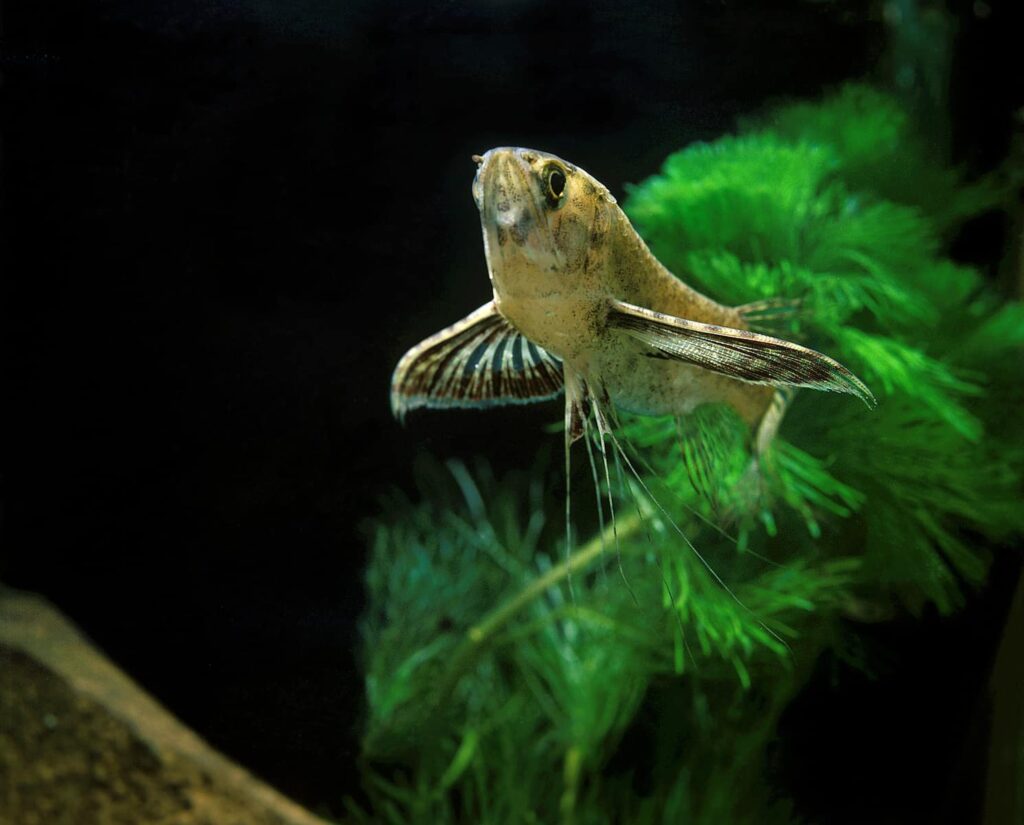If you’ve been looking to add new aquarium occupants to your collection, but aren’t quite sure which way to go, closer look at redheaded severum fish might make the decision all lot easier.
Beautiful fish from the subtropical waters of South America, these fish are (relatively) easy to keep, pretty calm, cool, and collected, and can also grow to about 8 inches long – and live for 10 years.
Getting along quite nicely with other fish (so long as you have a couple of different species to sort of break things up), a lot of fish keepers are amazed at just how well behaved redheaded severum are.
Especially for their size.
Below we dig a little bit deeper into the ins and outs of these fish, shining a light on everything that makes them special, how to best keep them happy and healthy, and a whole lot more.
Let’s get right into it!
Ideal Tank Conditions for Redheaded Severum Fish
Because these fish can get so big (8 inches when they become mature adults, but often getting even longer than that) you’re going to want to make sure that there is plenty of water in your aquarium for these fish to move around it.
Truth be told, it’s not at all uncommon for these fish to stretch out to 14 inches in length (sometimes even 16 inches) – with the largest redheaded severum in captivity reaching up to 30 inches in length.
A 50 gallon tank isn’t going to “cut the mustard”, as they say.
No, at minimum – minimum – you want to make sure that you have a 70 gallon tank to keep a single redheaded severum in. If you’re going to keep more fish (especially more of these fish) you’ll want to bump up to at least 120 gallons.
Honestly, though, kicking that up to harden 50 gallons (or larger) is probably the way to go.
Like most other fish that come from Central and South American waters the redheaded seven likes things a little on the warmer side. We are talking about water temperatures that are between 76°F and 86°F.
On the pH side of things, redheaded severum really do well with a pH rating of 7.0. You don’t want to stray too far from that. The health of these fish can suffer if the pH starts to get a little wonky.
Water hardness is another thing you’ll want to keep your eyes on. Between 10° and 15°H are perfect conditions for your redheaded severum to thrive in.
It’s a good idea to have a powerful filtration system in place to keep water quality hi, too. These are large fish, after all – and that means they produce a lot of waste.
Water heaters are essential to keep temperatures dialed in. You also want to swap out water two or three times a week to make sure that ammonia and nitrates are eliminated (possibly even more frequently than that, depending on how many fish you’re keeping in the same tank).
Redheaded Severum Fish Behavior
For as large a fish as the redheaded severum is you’re really not going to bump into a lot of aggression problems – unless you have multiple redheaded severum in the same tank and there aren’t any other “buffer species” in the water to keep the peace.
As a general rule of thumb, though, it’s easy to keep these large fish in a less than aggressive state.
Make sure they have plenty of water, have at least one more redheaded severum to “buddy up with”, and keep water conditions at optimal levels.
If these fish do become aggressive, though, you’ll have to consider removing them from the tank completely.
Any redheaded severum that show aggressive for territorial behavior should be removed ASAP. They can become biters, and because their bite is so powerful it doesn’t take very long for things to go south in the tank.
How Big Do Redheaded Severum Fish Get?
As mentioned earlier, these fish (generally) grow to be about 8 inches long when they become mature adults.
It isn’t at all super uncommon for these fish to get a little bigger, though. 14 inch redheaded severum, 16 inch redheaded severum, and even 18 inch (or larger) fish are pretty normal.
Fish larger than that get a bit more rare, with the largest redheaded severum in captivity being recorded at 30+ inches.
Are Redheaded Severum Fish Hardy Fish?
Generally a pretty hardy fish, these underwater creatures will be able to tolerate some fluctuation in water temperature and some fluctuation in water hardness.
They don’t do well when the pH is messed with, though, and they really don’t do well if nitrates and ammonia levels are allowed to build up.
All in all, though, these fish are nowhere near as finicky as some of the other fish that they can comfortably share an aquarium with.
They’re pretty big, pretty hardy, and capable of sort of “rolling with the punches” – as long as those fluctuations aren’t sustained or extreme.
Are Redheaded Severum Fish Mouthbrooders?
The redheaded severum is not a mouth brooder (that is the mouth brooding severum – sometimes called the red eyed severum or the red sided severum).
Instead, mated pairs are going to connect with one another and become substrate spawners pretty quickly.
Female redhead severum lay up to 1200 eggs on cleaned, flattened surfaces (you might want to add bits of sleep rock to your substrate to help support this kind of brooding). After that, the male will come along and fertilize them and you can expect eggs to hatch within a couple of days.
The fry that are released are free swimming about seven days after that (so 10 days or so from start to finish). It might not be a bad idea to remove them from the tank as soon as they start to swim, though.
Redheaded severum that are in the breeding season are a whole lot more aggressive than they are throughout the rest of the year. You don’t want parents to consume their fry, triggering another brooding session, and ramping up their aggression even more.



